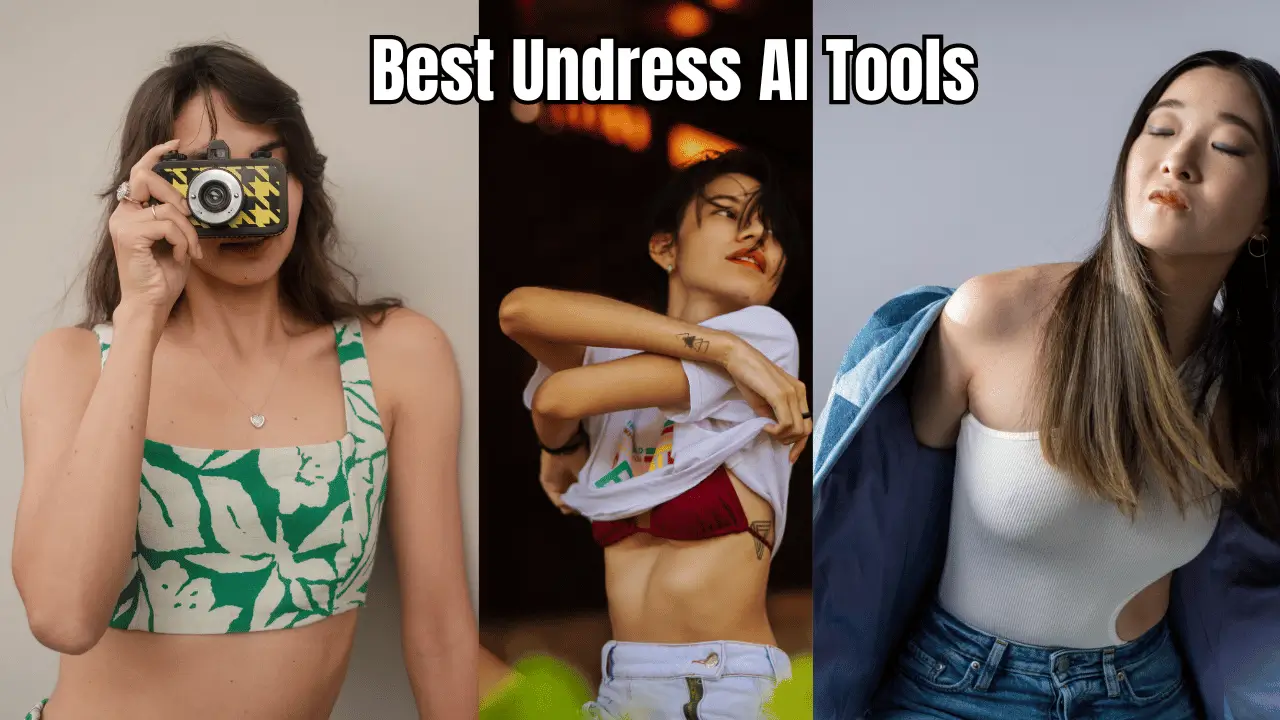Free AI Clothes Remover: How To Use It (Legally!) & Alternatives
Ever wondered if you could effortlessly alter a photograph, changing outfits or even removing clothing with just a few clicks? The rise of AI-powered tools is making this a reality, offering unprecedented control over digital imagery, but also raising serious ethical questions.
The digital landscape is rapidly evolving, with artificial intelligence permeating nearly every aspect of our lives. One of the most intriguing and controversial applications of AI is in the realm of image manipulation, specifically with tools designed as an ai clothes remover. These sophisticated programs utilize complex algorithms to analyze and modify images, allowing users to digitally alter clothing or, in some cases, remove it altogether. This technology, while offering innovative possibilities for creative expression and various professional applications, also brings forth significant ethical and societal concerns.
| Topic | Description |
|---|---|
| AI Clothes Remover Tools | Software or online platforms that use artificial intelligence to digitally remove or alter clothing in images. |
| Key Features |
|
| Potential Uses |
|
| Ethical Concerns |
|
| Examples of Tools | Unclothy, Slazzer 3.0, Anieraser, Weshop ai, Openart ai, Yce ai, Nudifier ai, Mimicpc. |
| Pricing Models |
|
| Accessibility |
|
| Reference | Example Website (This is a placeholder link, replace with a relevant and authentic source) |
Several platforms offer what they call a "100% free ai clothes remover," enticing users with the promise of no subscription fees or hidden costs. These services typically provide core features without upfront charges, allowing new users to explore the platform's capabilities before committing to any payment plan. For instance, some platforms grant a limited number of free trials daily, enabling users to experiment with ai clothing removal on a set number of images. This approach allows individuals to assess the tool's effectiveness and suitability for their needs without financial risk.
- Vegamovies Netflix Your Guide To Hindi Dubbed Movies 2024
- Vegamovies Mp4moviez More Your Hindi Movie Download Guide
However, it is crucial to understand the limitations and potential risks associated with these "free" services. While the basic functionality might be accessible without charge, advanced features or higher-quality results often require a paid subscription. Moreover, the term "free" might mask underlying data collection practices or the presence of intrusive advertising. Users should carefully review the terms of service and privacy policies of any ai clothes remover platform to understand how their data is being used and protected. The lure of a free service should not overshadow the importance of responsible and ethical use of this technology.
The capabilities of an ai clothes remover extend beyond mere novelty, as they can be applied to various creative and professional domains. Fashion designers, for example, can utilize these tools to visualize how garments will fit and drape on different body types without the need for physical prototypes. By digitally altering images, designers can experiment with various styles, colors, and patterns, gaining valuable insights into the aesthetic appeal and functionality of their creations. This process significantly reduces the time and resources required for traditional prototyping, enabling designers to iterate more quickly and efficiently.
Furthermore, artists and digital creators can leverage ai clothes remover technology to enhance or modify images for artistic projects, ensuring a seamless and realistic finish. Whether it involves removing unwanted elements from clothing or subtly altering the appearance of garments, these tools offer a level of precision and control that was previously unattainable. This opens up new avenues for creative expression, allowing artists to push the boundaries of digital art and explore innovative visual concepts. However, it is essential to acknowledge the ethical considerations associated with using this technology for artistic purposes, particularly when it involves altering images of real individuals without their consent.
- Ullu Web Series Whats Hot What To Watch Year Trends
- Best Bangla Movie Download Sites Latest Bengali Films 2025 Guide
One of the key advantages of modern ai clothes remover tools is their ease of use. With intuitive interfaces and streamlined workflows, users can modify images in seconds with just a few clicks, delivering precise and personalized results every time. The complexity of the underlying algorithms is masked by the user-friendly design, making it accessible to individuals with varying levels of technical expertise. This democratization of image manipulation empowers users to express their creativity and achieve professional-quality results without extensive training or specialized skills.
However, this ease of use also presents a potential risk, as it lowers the barrier to entry for malicious actors who might misuse the technology for unethical or illegal purposes. The ability to quickly and easily alter images raises concerns about the creation of deepfakes, non-consensual image manipulation, and other forms of digital abuse. It is crucial for users to be aware of these risks and to exercise caution when using ai clothes remover tools, ensuring that they are not violating anyone's privacy or rights.
Several tools are available in the market. Unclothy, for instance, is explicitly designed to undress photos. By leveraging advanced ai models, users can upload images, and the tool will automatically detect and remove clothing, generating deepnude images. Similarly, Nudifier ai claims to be the "#1 app for undressing photos," utilizing artificial intelligence to digitally undress photos uploaded by users. Other platforms, such as Slazzer 3.0, offer similar capabilities, promising users the ability to remove clothes from images with a high degree of accuracy. Anieraser's ai clothes remover also stands out as an advanced online tool designed to help users remove clothing from images.
The proliferation of these tools raises serious ethical questions about consent, privacy, and the potential for misuse. The ability to create realistic deepnude images without a person's knowledge or consent is a grave violation of their rights and can have devastating consequences. It is crucial for developers and users of these technologies to be mindful of these ethical implications and to implement safeguards to prevent abuse. This includes obtaining explicit consent before altering images of individuals, as well as developing algorithms that can detect and prevent the creation of deepfakes.
The use of ai clothes remover tools is not limited to illicit purposes; they can also be employed for legitimate and ethical applications. For instance, an ai clothes changer can be used as a virtual tool that allows users to digitally swap, change, or experiment with clothing styles, colors, and patterns on a photo or video of themselves. By leveraging artificial intelligence, this tool can simulate how different outfits or specific garments, like a dress, suit, or bikini, would look on someone without requiring them to physically try on the clothes. This can be particularly useful for online shopping, allowing customers to visualize how different items will look on them before making a purchase.
Furthermore, ai clothes remover technology can be used to transform portraits by undressing and seamlessly swapping outfits to suit fashion designs or creative projects. This allows designers and artists to experiment with different styles and aesthetics, gaining valuable insights into the visual impact of their creations. The ability to digitally alter clothing also opens up new possibilities for virtual fashion shows and online style consultations, where individuals can explore different looks and receive personalized recommendations without leaving their homes.
However, even in these seemingly benign applications, it is important to be mindful of the potential for misrepresentation or unrealistic expectations. The ability to digitally alter clothing can create a false sense of reality, leading individuals to believe that they can achieve a certain look or body image without significant effort or lifestyle changes. It is crucial for developers and users of these technologies to promote responsible and ethical use, emphasizing the importance of self-acceptance and realistic body image.
Despite the potential benefits, the ethical concerns surrounding ai clothes remover technology cannot be ignored. Undress VIP, for example, claims to offer a free AI service that can undress people in photos. While the allure of such a service might be tempting, it raises serious questions about privacy and the potential for misuse. The ability to digitally undress someone without their consent is a clear violation of their rights and can have devastating consequences, particularly if the resulting images are used for malicious purposes.
Ethical considerations are paramount when dealing with such sensitive technology. The potential for misuse, including the creation of deepfakes and non-consensual pornography, is substantial. Developers must prioritize user safety and privacy by implementing robust safeguards and adhering to strict ethical guidelines. Transparency about the capabilities and limitations of the technology is also crucial to prevent unrealistic expectations and potential harm. It is essential to foster a culture of responsible innovation, where ethical considerations are at the forefront of technological development.
Several platforms emphasize the importance of privacy and security. They claim to ensure that any uploaded and processed images are safe, guaranteeing that user information remains secure and confidential. They also guarantee personal privacy, enabling users to freely explore and express their creativity without any concerns. These assurances are essential for building trust and encouraging responsible use of the technology. However, it is crucial for users to independently verify these claims and to exercise caution when sharing personal information or uploading sensitive images.
The reality is that no system is completely immune to breaches or misuse, and it is essential for users to be aware of the potential risks involved. This includes understanding the limitations of the security measures in place, as well as the potential for human error or malicious intent. By taking a proactive approach to privacy and security, users can minimize the risk of their images being misused or compromised.
The creative potential of ai clothes remover tools is undeniable. They allow designers to visualize garments on different body types, artists to enhance images for artistic projects, and individuals to experiment with different styles and looks. An ai clothes changer is a tool that allows digital alterations of clothing styles, colors, and patterns on photos or videos. By leveraging artificial intelligence, different outfits or specific garments, like a dress, suit, or bikini, can be simulated on someone without needing the physical garments. Anieraser's ai clothes remover is designed to help users remove clothing from images, offering advanced online tools for image manipulation.
However, this creative freedom must be balanced with ethical considerations and a commitment to responsible use. The technology should not be used to create or disseminate harmful content, such as deepfakes or non-consensual pornography. Users should always obtain explicit consent before altering images of individuals and should be mindful of the potential impact of their creations on others. By adhering to these ethical guidelines, we can harness the power of ai clothes remover technology for good, promoting creativity and innovation while minimizing the risk of harm.
One of the growing concerns is the accessibility of undress ai technology, especially to young users. The potential for bullying, harassment, and the creation of deepfakes without consent introduces serious safety concerns online. Tools that claim to be "free to undress any image with ai" or offer an "ai undress generator" must be approached with extreme caution, as they can easily be misused for malicious purposes. It's critical to recognize that while some platforms promote their services as harmless fun, the reality can be far more sinister.
The rise of undress ai and similar technologies necessitates a multi-faceted approach to online safety. Parents, educators, and policymakers must work together to raise awareness about the risks involved and to equip young people with the skills and knowledge they need to protect themselves online. This includes teaching them how to identify deepfakes, how to report online abuse, and how to protect their privacy. It also requires holding developers and platforms accountable for the content that is shared on their services and for the steps they take to prevent misuse.
In the digital age, undress ai image editing has become a popular form of artistic expression, but it should be approached with a clear understanding of its ethical implications. Ai clothes remover websites allow users to explore their creativity by removing clothes from images, but this exploration should always be conducted within the bounds of the law and with respect for individual privacy. The charm of an undressed ai art generator should not come at the expense of someone's dignity or safety. Users should always be mindful of the potential impact of their creations and should avoid sharing content that could be harmful or offensive.
The tools that leverage artificial intelligence to enhance productivity, automate processes, and drive creative expression should be developed and used responsibly. Mimicpcs ai clothes remover workflow redefines undress ai with advanced ai technology, delivering precise ai undress services for creative industries, but it also underscores the need for ethical guidelines and safeguards. The future of ai clothes remover technology depends on our ability to harness its potential for good while mitigating the risks of misuse. By embracing responsible innovation, we can ensure that this powerful technology serves humanity rather than the other way around.
Undress AI is an online service that employs artificial intelligence to generate lifelike images of people in various states of attire, ranging from fully clothed to undressed, without the need for plugins. Accessible through the Telegram messaging app as a bot, it provides features such as customizable clothing removal styles, making it easily accessible to a wide audience. Services like these underscore the importance of understanding the capabilities and limitations of AI in image manipulation.
As AI continues to evolve, its integration into various aspects of digital media will only deepen. Understanding the potential of AI-driven tools, from enhancing productivity to enabling creative expression, is critical. The key lies in promoting ethical use and awareness, thereby maximizing benefits while safeguarding against misuse and privacy violations. Continuous dialogue and education are essential to ensure that AI technologies, including those for image manipulation, are used responsibly and ethically.
- Vegamovies 20 Is It Safe Best Free Movie Alternatives 2025
- Fikfap The Ultimate Guide Meaning Impact More

6 Best and Free Undress AI Tools to Remove Clothes. WishfulThemes

11 Free Undress AI Apps To Remove Clothes From Images

Undress AI Free Tool How to Remove Clothing from Any Image